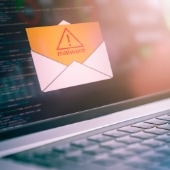 The myth of Macs being invincible to malware has long been shattered. But there are those who still believe this myth, and so may find themselves facing the chilling reality of a Mac malware infection. For businesses, especially, the consequences can be disastrous: stolen data, compromised accounts, and operational disruptions that cost time and money. This guide will equip you with the knowledge and resources to fight Mac malware, minimize damage, and defend your digital fortress.
The myth of Macs being invincible to malware has long been shattered. But there are those who still believe this myth, and so may find themselves facing the chilling reality of a Mac malware infection. For businesses, especially, the consequences can be disastrous: stolen data, compromised accounts, and operational disruptions that cost time and money. This guide will equip you with the knowledge and resources to fight Mac malware, minimize damage, and defend your digital fortress.
Identifying the threat
Before leaping into action, you need to assess the situation. Here are some telltale signs of a Mac malware infection:
- Uncharacteristic performance issues: Slowdowns, crashes, or unusual resource consumption can be indicators of malware activity.
- Pop-up ads and spam: Seeing unsolicited ads or receiving spam emails originating from your Mac could signal a compromised system.
- Unexplained applications or processes: Unfamiliar apps running in the background or processes you don’t recognize are possible signs of malware infection.
- Suspicious network behavior: Unusually high internet traffic or attempts to connect to unknown servers are indicators that your Mac could be infected with malware.
If you experience any of these signs, don’t hesitate to take action.
Responding to the attack
Confronting Mac malware requires a two-pronged approach: containment and removal.
1. Containment
- Disconnect from the network: This isolates the infected device and prevents further spread of the malware within your network.
- Shut down unnecessary applications: Close any suspicious programs or apps you don’t recognize to limit the malware’s access to your resources.
- Disable administrator accounts: This prevents the malware from making unauthorized system changes to your devices and network.
2. Removing the threat
- Run a reputable antivirus scan: Utilize a robust antivirus program such as Malwarebytes or Sophos to detect and remove the malware.
- Manually remove suspicious files and applications: If you identify the culprit, delete it from your system. However, exercise caution to avoid deleting critical files.
- Update your software: Ensure all your software, including macOS, applications, and browsers, are up to date with the latest security patches. This closes vulnerabilities exploited by the malware.
Remember: If you feel overwhelmed or unsure about any step, seek help from a cybersecurity expert.
Protecting your Mac from future attacks
Once you’ve successfully purged the malware, it’s time to strengthen your defenses against future attacks. Here are some proactive steps:
- Stick to the App Store: Download and install apps only from the Apple App Store, which enforces stricter security standards than third-party distribution platforms.
- Be wary of unsolicited downloads: Avoid downloading software from untrusted sources, including links or attachments in emails.
- Enable Gatekeeper: This built-in macOS feature restricts app installation to verified sources, offering an extra layer of protection.
- Create backups regularly: Frequently back up your data and store backups at a secure location. In case of an attack, you can easily restore your system and minimize downtime.
Don’t wait for a malware attack to disrupt your business. Take proactive steps today by scheduling a free consultation with our cybersecurity experts. We’ll assess your defenses, recommend tailored solutions, and ensure your Macs remain a safe haven for your valuable data.



